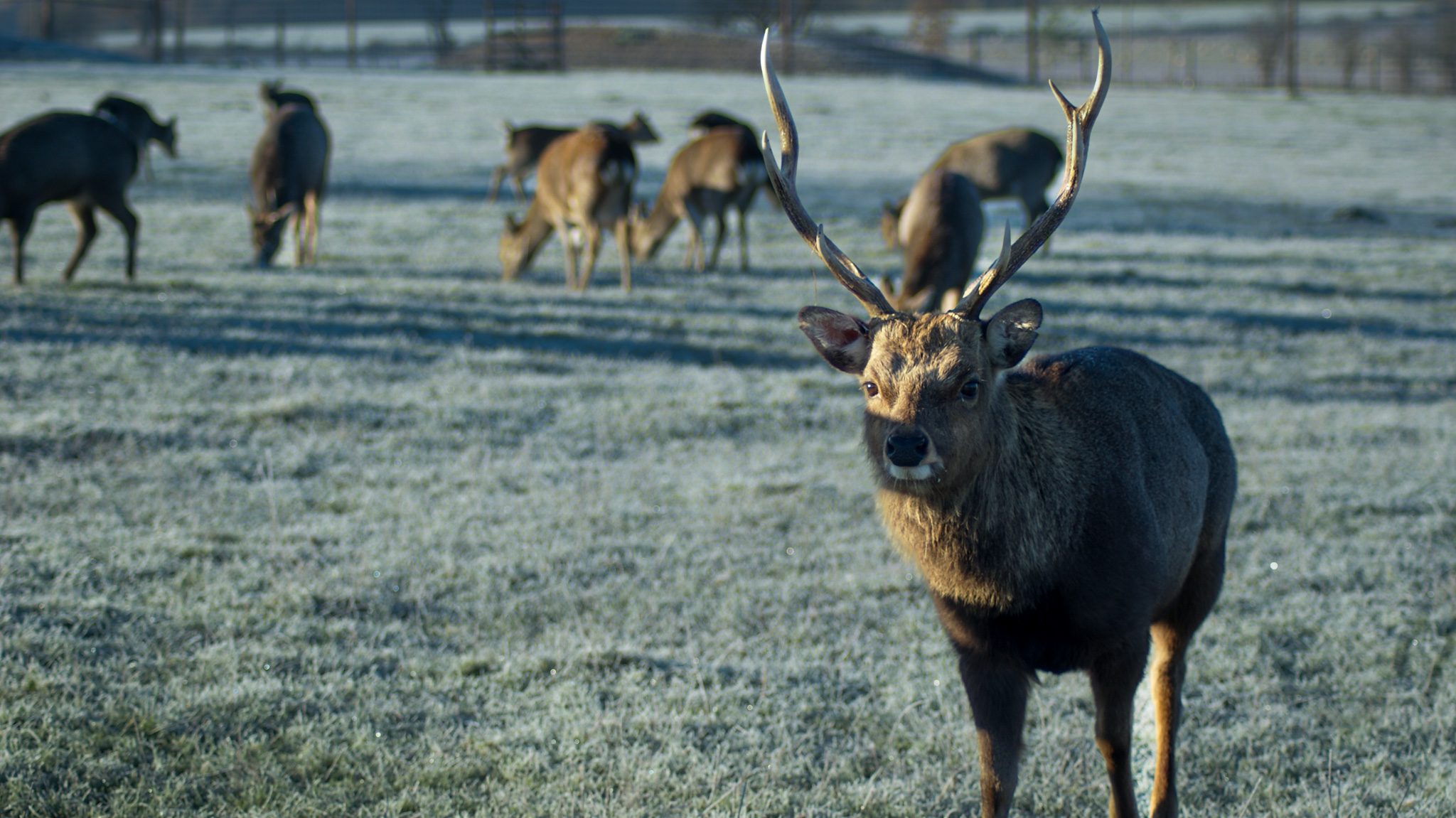Sika deer were introduced into Britain from the Far East in 1860. It is possible that almost all living English, Scottish and Irish Sika are descendants from only one Japanese stag and three hinds introduced to Viscount Powerscourt’s deer park at Enniskerry, Eire in 1860.
The name comes from shika, the Japanese word for “deer”. In Japan, the species is known as the “nihonjika”.
Sika graze on grasses and browse on dwarf shrubs and occasionally coniferous tree shoots and tree bark. Sika populations require careful management to maintain health and quality and ensure a sustainable balance with their environment.
Sika, similar in size and pellage to fallow deer, have white spots on their coats with a white caudal patch on their rump and a short, white tail. There is often a dark coloured dorsal stripe running the length of their back. In summer, they boast a rich chestnut coat mellowing to a dark mushroom colour in winter.
You can spot a sika deer as its head is small in comparison to its body.
